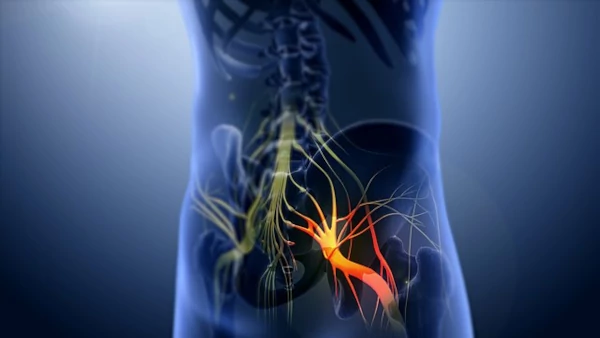Piriformis syndrome is a neuromuscular condition that occurs when the piriformis muscle, located in the buttock area, compresses the sciatic nerve. This condition can cause pain, tingling, and numbness in the buttocks, lower back, and legs. Piriformis syndrome is often mistaken for other conditions such as sciatica or herniated discs, but it is a distinct condition that requires its own treatment approach.
This article aims to provide a comprehensive guide on piriformis syndrome, including its symptoms, causes, treatment options, and prevention tips.
Symptoms of Piriformis Syndrome
The symptoms of piriformis syndrome can vary from person to person, but the most common ones include:
- Pain in the buttocks and lower back
- Numbness and tingling in the legs
- Pain when sitting for long periods
- Pain when walking or running
- Pain during intercourse
- Weakness in the legs
Causes of Piriformis Syndrome
Piriformis syndrome can be caused by a variety of factors, including:
- Tightness or spasm of the piriformis muscle
- Injury or trauma to the buttocks or hip area
- Overuse or repetitive use of the piriformis muscle
- Anatomical abnormalities such as a shorter leg on one side
- Herniated discs or spinal stenosis
Treatment Options for Piriformis Syndrome
There are several treatment options available for piriformis syndrome, including:
- Anti-inflammatory medications: Over-the-counter pain relievers such as ibuprofen and naproxen can help reduce inflammation and relieve pain.
- Injection therapy: Corticosteroid injections can help reduce inflammation and provide temporary relief from pain.
- Physiotherapy / Physical Therapy: Physiotherapy is one of the most effective non-surgical treatment options for Piriformis Syndrome. A physiotherapist can work with patients to develop an individualized treatment plan that may include stretching exercises, and strengthening exercises. These exercises can help to alleviate pain, reduce inflammation, and improve the range of motion. A physiotherapist can also educate patients on proper posture and body mechanics to prevent future injury. Additionally, they may use modalities such as heat or cold therapy, ultrasound, or electrical stimulation to aid in the healing process. Dry needling can be an effective treatment option for individuals with Piriformis Syndrome as it can help to release muscle tension and alleviate pain. With proper physiotherapy treatment, patients with Piriformis Syndrome can achieve significant pain relief and improved functionality without the need for surgery.
Prevention Tips for Piriformis Syndrome
To prevent piriformis syndrome, you can take the following steps:
- Stretch regularly: Regular stretching can help prevent tightness and spasms in the piriformis muscle.
- Warm up before exercising: A proper warm-up routine can help prepare your muscles for exercise and prevent injury.
- Maintain good posture: Sitting with good posture can help reduce stress on the piriformis muscle.
- Avoid sitting for long periods: Sitting for extended periods can put pressure on the piriformis muscle, leading to tightness and pain.
- Use proper lifting techniques: Using proper lifting techniques can help prevent injury to the back and buttocks.
FAQs
How is piriformis syndrome diagnosed?
Piriformis syndrome is typically diagnosed through a physical examination and medical history. Your doctor may also order imaging tests such as an MRI or X-ray to rule out other conditions.
Is piriformis syndrome a permanent condition?
Piriformis syndrome can be a chronic condition, but with proper treatment and preventive measures, it can be managed effectively.
Can piriformis syndrome cause sciatica?
Yes, Piriformis Syndrome can cause sciatica. The piriformis muscle is located deep in the buttock, and when it becomes tight or inflamed, it can compress the sciatic nerve, which runs through or under the muscle. This compression can cause symptoms similar to those of sciatica, such as pain, tingling, and numbness in the buttocks, back of the thigh, and leg.
Can piriformis syndrome be treated without surgery?
Yes, piriformis syndrome can often be treated without surgery through a combination of stretching exercises, physical therapy, massage therapy, and medication.
How long does it take to recover from piriformis syndrome?
The recovery time for piriformis syndrome can vary depending on the severity of the condition and the individual’s response to treatment. In most cases, however, with proper treatment and preventive measures, the symptoms can be managed within a few weeks to a few months.
Conclusion
Piriformis syndrome is a common neuromuscular condition that can cause pain and discomfort in the buttocks, lower back, and legs. It is often mistaken for other conditions such as sciatica, but it requires its own treatment approach. The good news is that with proper treatment and preventive measures, the symptoms of piriformis syndrome can be managed effectively, and surgery is often not necessary.
If you suspect that you may have piriformis syndrome, it is important to seek medical attention promptly. Your doctor can help you develop a treatment plan that is tailored to your specific needs and help you manage the symptoms of this condition effectively.



